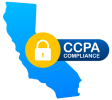The concept of an employer brand is nothing new. Way back in 1996, ResearchGate published a 22-page paper (opens as a PDF) based on the theory that the application of brand management techniques to human resource management (HR) could be beneficial to the recruitment process.
Today, most HR professionals and recruiters acknowledge that building an employer brand is an integral part of the recruitment and hiring process, but there is some disagreement over how to create one and who should do it.
WHAT IS AN EMPLOYER BRAND, AND WHY IS IT IMPORTANT?
In a nutshell, the employer brand describes your company and articulates why someone would want to work for you. Importantly, it should align with the company’s mission and a set of values that your company offers to its employees and potential employees.
Job seekers increasingly are doing more research about companies before they apply for a job. Glassdoor, Indeed, Vault, CareerBliss and Fairygodboss are just some of the many sites now offering employee reviews for all to see. Candidates want to understand the company culture, its values, and its mission so they can determine if these qualities align with their own.
According to a LinkedIn survey,
· 66% of candidates want to know about company culture
· 54% of candidates want to know about perks
· 50% of candidates want to know the company’s mission
Some companies make the mistake of thinking that listing a bunch of perks like free lunches, unlimited PTO, cappuccino bars, or Friday beer bashes on their career site or in their job descriptions represents the employer brand. But let’s be clear: an employer brand, these are not. It’s not that perks aren’t important to potential employees, because they definitely are. However, perks alone won’t attract the cream of the candidate pool to your company.
In today’s challenging recruitment landscape, the company that has articulated a clear employer brand often separates itself from everyone else when it comes to attracting the best and most relevant candidates. When building your employer brand content, be careful that you don’t make it superficial. It needs to be a seriously thought out strategy.
Unfortunately, creating and communicating your employer brand is not easy.
Learn the tricks to adding a personal touch, being adaptable, and creating a user-friendly experience to keep potential candidates hooked.
Turn Your Career Site Into a Talent Magnet!
DEFINING YOUR EMPLOYER BRAND
[Employer brand is] . . . about effort. It’s about dedication. It’s about doing your homework and about being authentic and understanding the importance of humor and heart.
Ed Nathanson, Founder Red Pill Talent
The truth is, whether you like it or not, your company already has an employer brand. And, if you haven’t thought it through, defined it, and communicated it yourself, you’re letting others do it for you.
Employees and former employees share their thoughts and feelings about your company with friends and acquaintances, and they often post their thoughts online. If you don’t have a well thought out employer branding strategy that you regularly communicate to employees, they have to make it up for themselves. And that can lead to confusing messages about your company, both internally and externally.
Your first step to taking control of your employer brand is to figure out how current and even former employees see the company. Then you need to decide if what they think aligns with what you want your brand to be.
This part can be hard, because to get to the heart of your current employer brand you’ll need to ask some tough questions, such as: are your current employees happy? And, if not, why not? Why did former employees leave? Ask them to assess important areas such as the company strategy, sense of purpose, and company values. The answers to these questions will confirm whether you are in control of your brand or not.
Keep in mind when doing this research, that just because you think certain things your company has or does are a big advantage, employees and potential employees may not feel the same. As you gather more information, validate your findings and views with folks across different areas of the company. Don’t find yourself in an echo chamber and potentially miss valuable feedback as a result. The most critical part of an employer branding strategy is to land on something authentic and true to who you are, across teams. Without this, you will find it incredibly difficult to get buy-in and belief in your brand.
COMMUNICATE AND LIVE YOUR EMPLOYER BRAND
Once you’ve undertaken your research and determined what your employer brand is (or what you want it to be), it’s time to focus on communication. It starts internally and is critical that you articulate it clearly, on a regular basis, to everyone in the company.
Here are a few ideas on how to get folks on board with the employer brand:
- Create a team of brand ambassadors who are advocates of the employer brand across different functions of the company. Make sure they genuinely agree on how you’ve defined the brand. Your ambassadors should exude the brand and communicate it to others through their words and actions, both 1:1 and in group settings. Meet monthly or quarterly to check in with each other. What are they seeing, hearing as relates to the brand?
- Reward employees for “living the brand”: create a brand champion program and have employees nominate the peers who they feel embody one or more of your brand values. Nominate and choose a new brand champion for a different value each month, or each quarter. When there’s a winner, share it across the company and make sure leadership acknowledges the contribution of that person or people.
- Post your mission/vision/value statements around the office so that everyone sees them every day. Take time in team meetings to talk about them, engage with each other and ask questions. Highlight a specific value and have a real conversation about it, not just a read-out on what it is. Ask your leadership team to carve out time in all-hands meetings to talk about a value and what it means to them. Make it personal.
There are many resources available to help you define and communicate your employer brand. If you do your homework, ask the tough questions of your employees (present, future and former), and take their input to heart, you’re well on your way to understanding, articulating and owning your company’s employer brand. Importantly, recognize that your employer brand is not static. It is not something that is created and then left to be. Your employer brand is constantly evolving, changing, morphing, as is your company. Stay tuned in to it, focus on it, and you will see it flourish.
About Joveo
Joveo® delivers the most relevant hires in the shortest time to companies around the world. Providing real-time insights at every step of the job seeker journey from click to hire, our AI-powered job advertising platform dynamically manages and optimizes sourcing and applications across all online channels. Powering 20M+ job postings every day, our machine learning continuously identifies success, learns and improves to reach the talent you need, when you need it.
Built for ease of use, Joveo replaces the guesswork, complexity and inefficiency of today’s recruiting with intelligence, transparency and efficiency, delivering more relevant candidates, more certainty, more success.
Reach them, recruit them, with Joveo.
Contact us today to schedule a demo.








